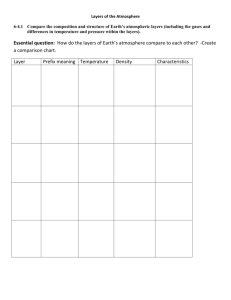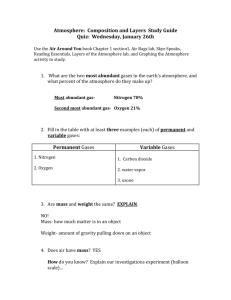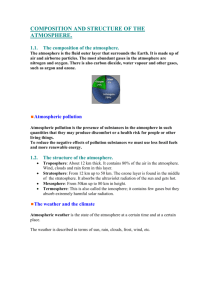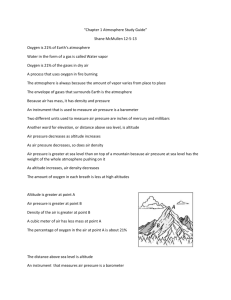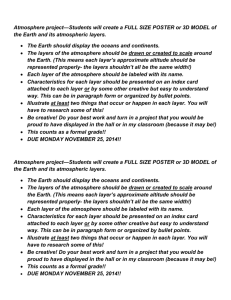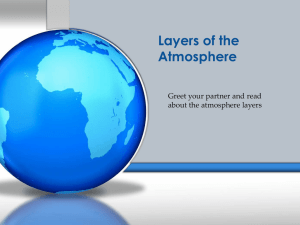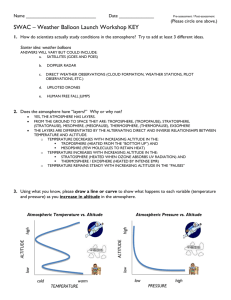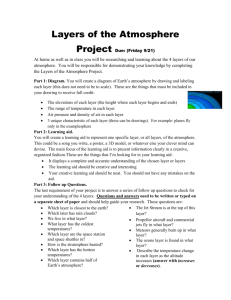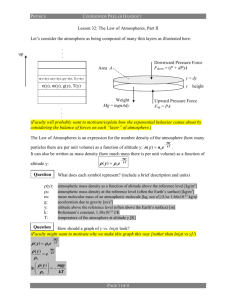Virtual Lab-Atmosphere Layers
advertisement
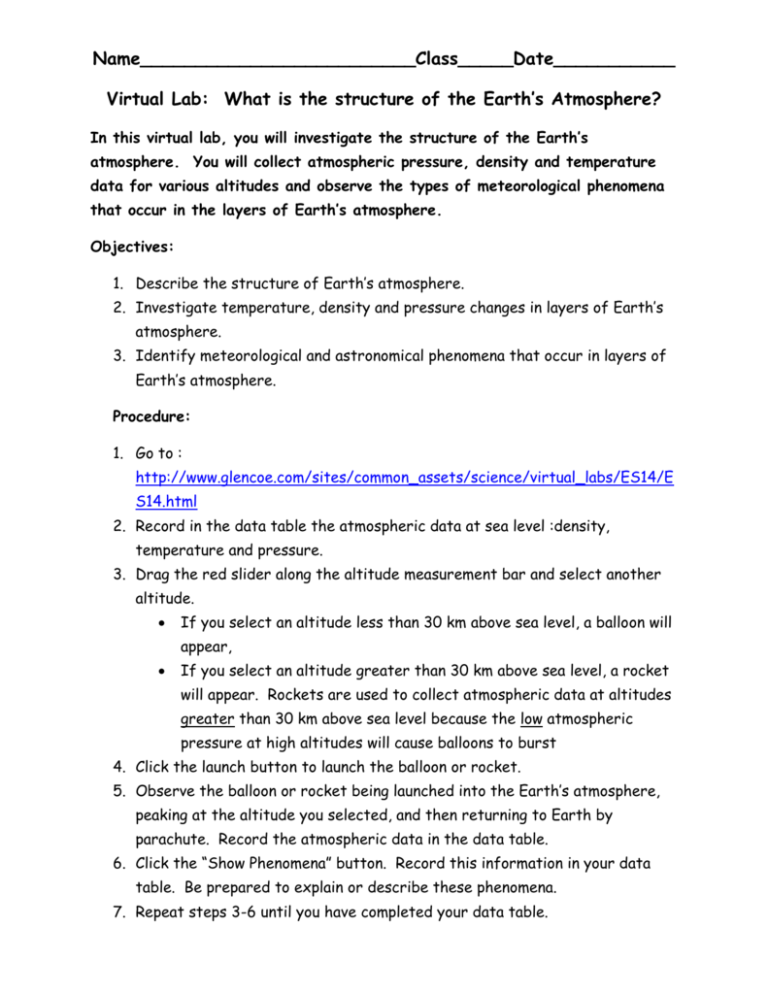
Name_________________________Class_____Date___________ Virtual Lab: What is the structure of the Earth’s Atmosphere? In this virtual lab, you will investigate the structure of the Earth’s atmosphere. You will collect atmospheric pressure, density and temperature data for various altitudes and observe the types of meteorological phenomena that occur in the layers of Earth’s atmosphere. Objectives: 1. Describe the structure of Earth’s atmosphere. 2. Investigate temperature, density and pressure changes in layers of Earth’s atmosphere. 3. Identify meteorological and astronomical phenomena that occur in layers of Earth’s atmosphere. Procedure: 1. Go to : http://www.glencoe.com/sites/common_assets/science/virtual_labs/ES14/E S14.html 2. Record in the data table the atmospheric data at sea level :density, temperature and pressure. 3. Drag the red slider along the altitude measurement bar and select another altitude. If you select an altitude less than 30 km above sea level, a balloon will appear, If you select an altitude greater than 30 km above sea level, a rocket will appear. Rockets are used to collect atmospheric data at altitudes greater than 30 km above sea level because the low atmospheric pressure at high altitudes will cause balloons to burst 4. Click the launch button to launch the balloon or rocket. 5. Observe the balloon or rocket being launched into the Earth’s atmosphere, peaking at the altitude you selected, and then returning to Earth by parachute. Record the atmospheric data in the data table. 6. Click the “Show Phenomena” button. Record this information in your data table. Be prepared to explain or describe these phenomena. 7. Repeat steps 3-6 until you have completed your data table. Observations: Data table Altitude (km) Density (% of sea level) Pressure (Pa) Temperature (0 C) Phenomena O (sea Level) Analysis 1. Which Layer of the atmosphere do you live in? a. What kinds of meteorological phenomena can be found in this layer? 2. If a rocket were launched to a height of 210 kilometers above sea level, which atmospheric layer would it rise to? a. What kinds of phenomena might be encountered in this layer? 3. What is the ozone layer? a. In what layer of the atmosphere can it be found? b. What is its importance to life on Earth? 4. Describe the pattern of density changes within the layers of the atmosphere. 5. Describe the pattern of pressure changes within the layers of the atmosphere. 6. What is the relationship between air density and air pressure? 7. Describe the pattern of temperature changes within the layers of the atmosphere. 8. Why do you think the temperature changes follow this pattern? 9. A hot air balloon will pop when you reach an altitude of about 80 km. Look at your data and use it to explain why this happens. 10. If the atmospheric pressure is reduced and you are not wearing a pressurized suit, predict what would happen to your body (in theory) if you were able to reach an altitude of 85 km. 11. Put it all together in a summative paragraph. Explain the changes in density, pressure and temperature and the relationships between these characteristics.


